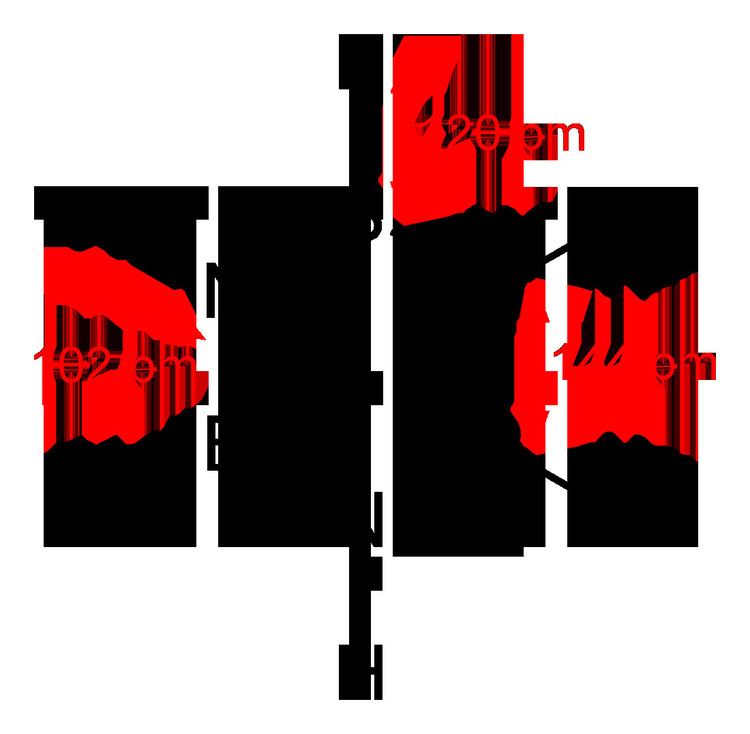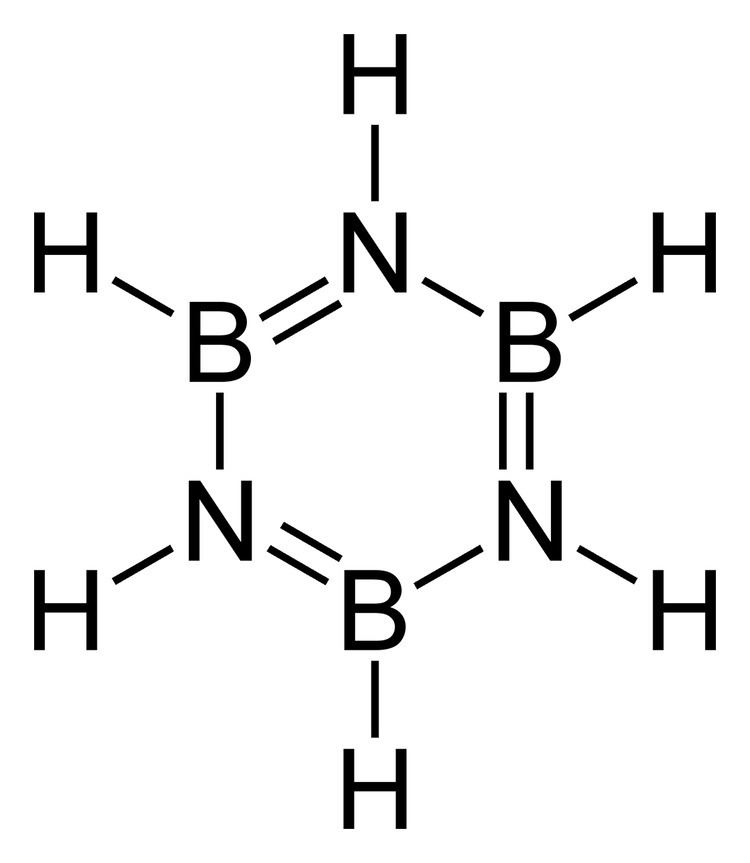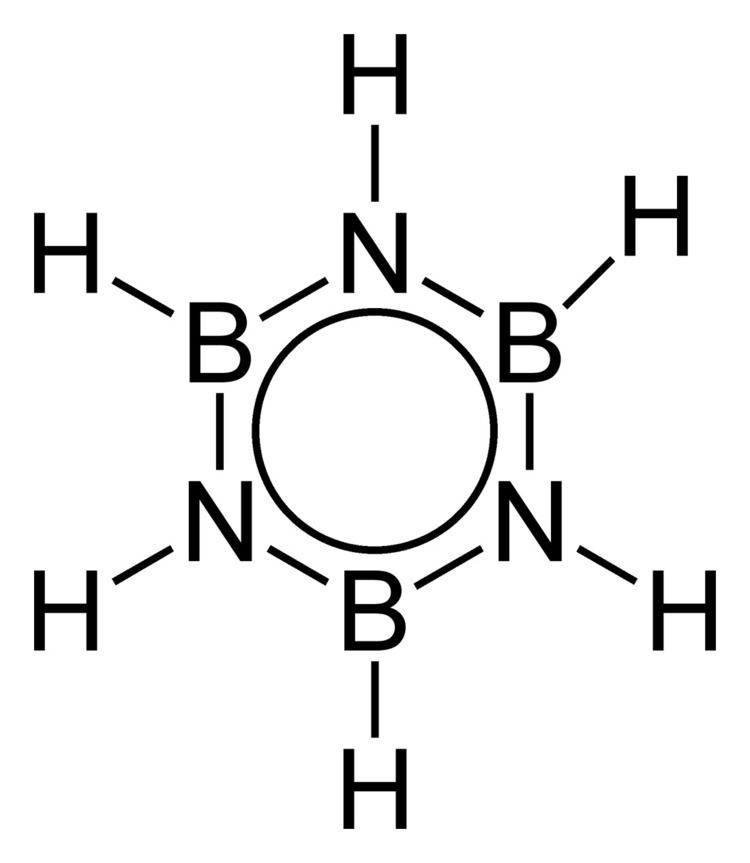Formula B3H6N3 Molar mass 80.5 g/mol | Boiling point 53 °C Density 810 kg/m³ | |
 | ||
Borazine
Borazine is an inorganic compound with the chemical formula (BH)3(NH)3. In this cyclic compound, the three BH units and three NH units alternate. The compound is isoelectronic and isostructural with benzene. Like benzene, borazine is a colourless liquid. For this reason borazine is sometimes referred to as "inorganic benzene".
Contents

Synthesis

The compound was reported in 1926 by the chemists Alfred Stock and Erich Pohland by a reaction of diborane with ammonia.
Borazine is synthesized from diborane and ammonia in a 1:2 ratio at 250–300 °C with a conversion of 50%.
3 B2H6 + 6 NH3 → 2 B3H6N3 + 12 H2An alternative more efficient route begins with lithium borohydride and ammonium chloride:
3 LiBH4 + 3 NH4Cl → B3H6N3 + 3 LiCl + 9 H2In a two-step process to borazine, boron trichloride is first converted to trichloroborazine:
3 BCl3 + 3 NH4Cl → Cl3B3H3N3 + 9 HClThe B-Cl bonds are subsequently converted to B-H bonds:
2 Cl3B3H3N3 + 6 NaBH4 → 2 B3H6N3 + 3 B2H6 + 6 NaClProperties

Borazine is a colourless liquid with an aromatic smell. In water it hydrolyzes to boric acid, ammonia, and hydrogen. Borazine, with a standard enthalpy change of formation ΔHf of −531 kJ/mol, is thermally very stable.
Structure and bonding

Borazine is isostructural with benzene. The six B-N bonds have length of 1.436 Å. The carbon–carbon bond in benzene is shorter length at 1.397 Å. The boron–nitrogen bond length is between that of the boron–nitrogen single bond with 0.151 nm and the boron–nitrogen double bond which is 0.131 nm. This suggests partial delocalisation of nitrogen lone-pair electrons.

The electronegativity of boron (2.04 on the Pauling scale) compared to that of nitrogen (3.04) and also the electron deficiency on the boron atom and the lone pair on nitrogen favor alternative mesomer structures for borazine.
Boron is the Lewis acid and nitrogen is the Lewis base.
Reactions
Although often compared with benzene, borazine is far more reactive. With hydrogen chloride it forms an adduct, whereas benzene is unreactive toward HCl.
B3N3H6 + 3 HCl → B3N3H9Cl3Addition reaction of borazine with hydrogen chlorideB3N3H9Cl3 + NaBH4 → (BH4N)3Reduction with sodium borohydrideThe addition reaction with bromine does not require a catalyst. Borazines undergo nucleophilic attack at boron and electrophilic attack at nitrogen. Heating borazine at 70 °C expels hydrogen with formation of a borazinyl polymer or polyborazylene, in which the monomer units are coupled in a para fashion by new boron-nitrogen bonds. Boron nitride can be prepared by heating polyborazylene to 1000 °C. Borazines are also starting materials for other potential ceramics such as boron carbonitrides. Borazine can also be used as a precursor to grow boron nitride thin films on surfaces, such as the nanomesh structure which is formed on rhodium.
Polyborazylene has been proposed as a recycled hydrogen storage medium for hydrogen fuel cell vehicle applications, using a "single pot" process for digestion and reduction to recreate ammonia borane.
Among other B-N type compounds mixed amino-nitro substituted borazines have been predicted to outperform carbon based explosives such as CL-20.
Related compounds
Carborazine is another six-membered aromatic ring with two carbons, two nitrogens and two borons in opposing pairs.
